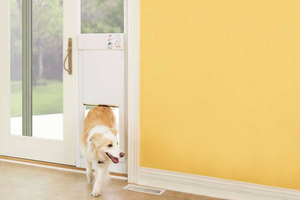How to Introduce Cats and Dogs to Each Other
While dogs and cats are famous for not getting along, dogs and cats living together are actually possible and very common. If you’re looking to add another member to your pet family while already owning a pet cat or dog, you’re probably wondering what is the best way to introduce them to each other without causing any harm.
What you don’t want to do is introduce your dog and cat to each other without supervision and without either pet leashed. Do that, and you’ll be setting them up to fail.
Instead, take your time and follow these steps to learn how to introduce dogs and cats to each other.

Step 1: Make Sure Your Cat and Dog Have the Right Temperaments
While it’s tempting to grab the first dog or cat you find at the shelter, you will need to pair your dog and cat up by personality compatibility.
If your dog is aggressive and known to pin, chase, growl, lunge, bark obsessively, or generally manhandle cats, then you should reconsider pairing your dog with a cat. Similarly, shy cats shouldn’t be paired with dogs who love to chase, as a cat who runs away can exacerbate your dog’s aggression and further terrorize your cat.
The same can be said of the reverse. If you have a cat who displays aggression around dogs, such as growling, swatting and hiding, then you should consider keeping them in a dog-free environment. If you have a dog who doesn't like rough play or to be chased, then an energetic cat who enjoys pouncing and running about would be a bad fit.
Generally, when introducing a cat to a dog, you are looking for two pets of a similar temperament. You want a dog who is mild-tempered, gentle, and good at following directions. Your ideal cat would be one that is calm and confident and is not prone to running away.
The best way to find a dog or cat that is good around the other is to find one that was raised with the other. Adult cats and dogs who have never had a companion before will have a harder time adjusting to a different species running around in their space. But a cat who grew up around dogs and vice versa.
Additionally, if either your dog or cat is elderly, anxious, or just laid back, then a calm companion will be your best bet.
Step 2: Separate Your Dog and Cat From Each Other
Ideally, you would want your pets to meet outside of the home for their first interaction, but shelter policies often won’t allow it. However, this step is not necessary and you can go straight into bringing a new cat home to your dog and vice versa.
When you first bring your new pet home, it’s important to keep them separated in different rooms. One pet, usually the cat, should have their own room that the dog cannot access that contains their food, toys, scratching posts, and litter boxes. Your dog will also need to be kept isolated in his own area of the house where he can have access to his food, water, and pet door.
Over a period of a few days, you can cycle through letting either pet have free reign over the house while the other is confined. This will allow either the cat or dog to investigate the other’s scent and become used to it. It’s helpful to also bring blankets covered in your dog or cat’s scent into the other’s isolated area. Both of these techniques allow your pets time to acclimate to the other’s scent in a safe environment.
It’s vital to make sure neither animal has free reign of your home while there is no one to supervise. Any unsupervised interactions, even through doors, can traumatize both animals.
You will know that your pets are ready to move on to the next step when your dog is not obsessively trying to reach the cat (such as obsessively digging or barking at the separation barrier). Meanwhile, your cat will have resumed normal eating and litter box habits.

Step 3: Make Supervised Introductions
You can now allow your pets to interact with each other in the same room as long as they are closely supervised. Keep your dog on a leash at all times. If no one is home or around to supervise, keep your pets isolated.
You want to encourage your dog to remain calm and ignore your cat. Along with punishing any negative behavior towards the cat, reward your dog for ignoring them as well.
If either pet behaves questionably, such as hissing or swatting, then give them both a break and try again another day.
Continue this step for as long as needed until both your dog and cat are happy and relaxed near each other. We recommend taking it slow and giving both pets at least a month to acclimate.
If either pet shows any signs of fear or aggression, go back to step 2.
Step 4: Start Unsupervised Interactions
Once both of your pets are calm and comfortable around each other in a supervised environment, you can start allowing them to spend unsupervised time around each other. Don’t start this step until you are sure they are both ready.
What If None Of These Steps Work?
We recommend seeking professional help. A dog or cat behaviorist will be able to give you pointers as to the best way to introduce your pets to each other. However, there are also some dogs and cats who cannot live with another pet. In those cases, you might want to consider finding a family who would love to have your pet live alone with them.




